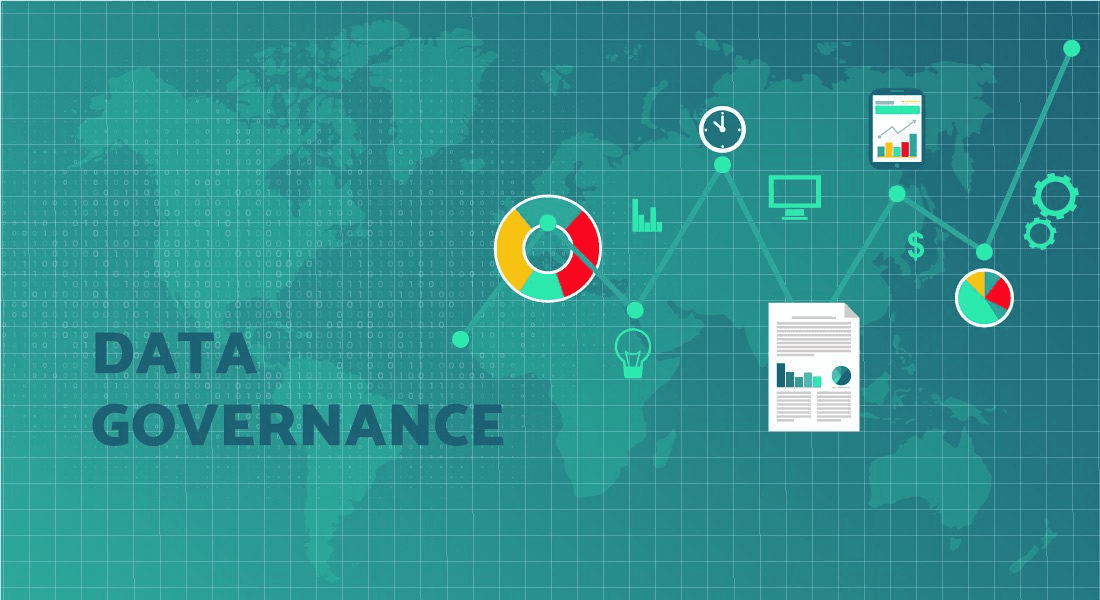Expert Insights on Data Governance: A Comprehensive Approach to Data-Driven Success
٢٢ ربيع الأول ١٤٤٦ هـ
In a world where data drives decisions, managing that data effectively has never been more critical. A robust data governance framework is essential for ensuring that data is well-organized, secure, and actionable. Below are key elements of data governance that our experience in the Data Domain has helped us to drive successful Data Transformation Projects. The below structure addresses each aspect of data governance and offers insights into how these components work together to build a successful, data-driven organization.
1. Data Architecture and Data Modelling
At the foundation of any data governance strategy is a solid Data Architecture. It defines how data is collected, stored, and managed throughout the organization. This architecture ensures that data is structured in a way that supports organizational goals.
Data Modelling comes into play by organizing and standardizing how data entities relate to one another. Experts emphasize that well-designed models provide a blueprint for how data flows across systems, making it easier to manage and integrate new data sources while maintaining consistency and integrity.
“A clear data architecture forms the backbone of data governance. It sets the stage for effective data management, ensuring scalability and flexibility.”
2. Master Data Management (MDM)
Master Data Management (MDM) plays a critical role in data governance by centralizing key business entities—such as customer, product, and employee data—into a single, trusted view. MDM ensures that essential data is accurate, consistent, and available across all platforms and systems.
By streamlining and unifying these core data sets, MDM reduces redundancy and improves decision-making, ensuring that teams across departments work from a “single version of the truth.”
“MDM is not just about data accuracy; it’s about trust in your data. When you trust your data, you make better decisions.”
3. Data Integration
In the age of digital transformation, organizations gather data from a multitude of systems, databases, and external sources. Data Integration is the process of combining this diverse data into a unified, actionable format.
Data governance ensures that this integration is done efficiently and accurately, preventing data silos while facilitating real-time data availability for analytics and decision-making. Experts recommend using automated tools to manage complex integration processes while maintaining data quality.
“Efficient data integration is the glue that binds your data assets together, ensuring you can derive value from them in a meaningful way.”
4. Business Glossary: Data Lineage and Data Catalogue
A Business Glossary is an essential component of data governance, providing a shared understanding of key data terms across the organization. It aligns business and technical teams, reducing ambiguity in how data is used and understood.
Data Lineage tracks the journey of data from source to destination, offering transparency on how data is transformed and used across systems. A Data Catalogue serves as a searchable repository of all available data assets, making it easier for users to discover, access, and trust data.
“Data catalogues and lineage tools are vital for transparency. They provide insights into the lifecycle of data and enable better collaboration and compliance.”
5. Data Quality Policies and Procedures
Data quality is non-negotiable. Establishing clear Data Quality Policies and Procedures ensures that data is accurate, complete, and consistent. These policies must define how data quality is measured and managed, including data validation, cleansing, and enrichment processes.
Automated tools are invaluable in monitoring data quality and identifying issues in real-time. Governance experts recommend adopting continuous data quality improvement processes to ensure that as data grows, so does its reliability.
“Good decisions come from good data. By setting up strong data quality policies, you create a foundation of trust in your data.”
6. Data Privacy & Security
With data breaches on the rise and privacy regulations tightening globally, safeguarding data is paramount. Data Privacy and Security should be integral to your data governance framework, ensuring that sensitive information is protected from unauthorized access and misuse.
This includes implementing encryption, role-based access controls, and anonymization techniques. Experts stress that privacy must be considered at every stage of the data lifecycle, from collection to disposal, aligning with the principles of Privacy by Design.
“Effective data security is more than just firewalls and encryption—it’s about embedding security and privacy into every data-related process.”
7. Compliance and Regulation
In today’s regulatory landscape, compliance is critical to avoid hefty fines and reputational damage. Data governance frameworks must be aligned with international standards such as GDPR, CCPA, HIPAA, and others.
Automated compliance tools can help organizations stay up-to-date with ever-changing regulations. Implementing frameworks for data retention, data privacy, and reporting is essential for staying compliant while also ensuring ethical data usage.
“Compliance isn’t a checkbox; it’s an ongoing journey. Data governance frameworks should be agile enough to adapt to new laws and standards.”
8. Continuous Improvement Plan
Data governance isn’t a one-time project; it’s an ongoing discipline. A Continuous Improvement Plan should be embedded within your governance framework to regularly assess and enhance governance practices.
Key actions include periodic audits, user feedback loops, and governance health checks to ensure that the framework remains aligned with business goals and evolving data strategies. A commitment to continuous improvement ensures that governance practices evolve with the growing complexity of data.
“A data governance framework should be a living, breathing entity, constantly adapting to new data challenges and opportunities.”
Conclusion: Building a Data-Driven Future
A successful data governance strategy is built on the synergy of architecture, policies, and culture. By focusing on these key components—data architecture, MDM, integration, data quality, privacy, and continuous improvement—organizations can unlock the full potential of their data while mitigating risks.
Data governance is no longer just a necessity for compliance; it is a strategic asset that drives value across the enterprise.




